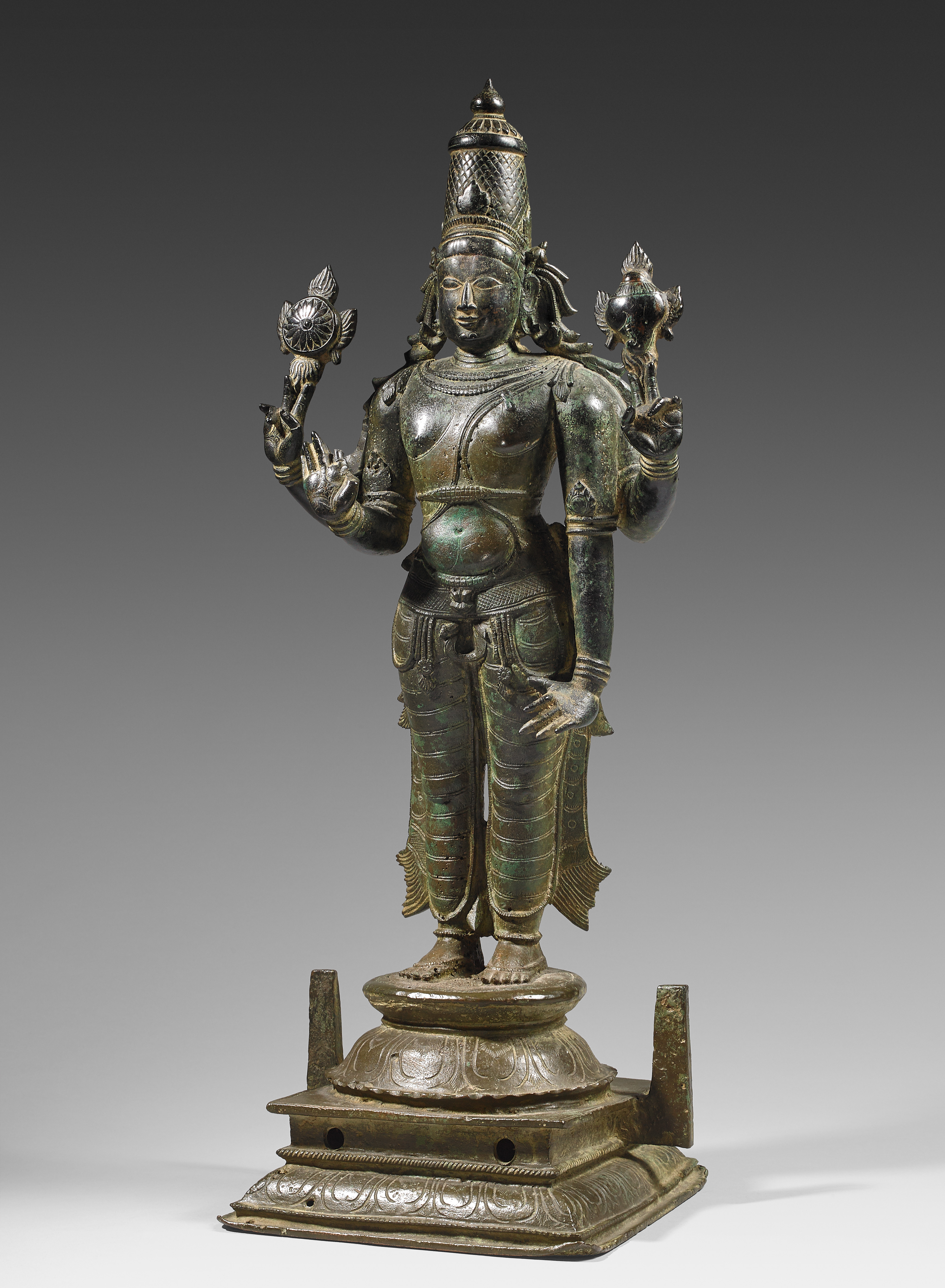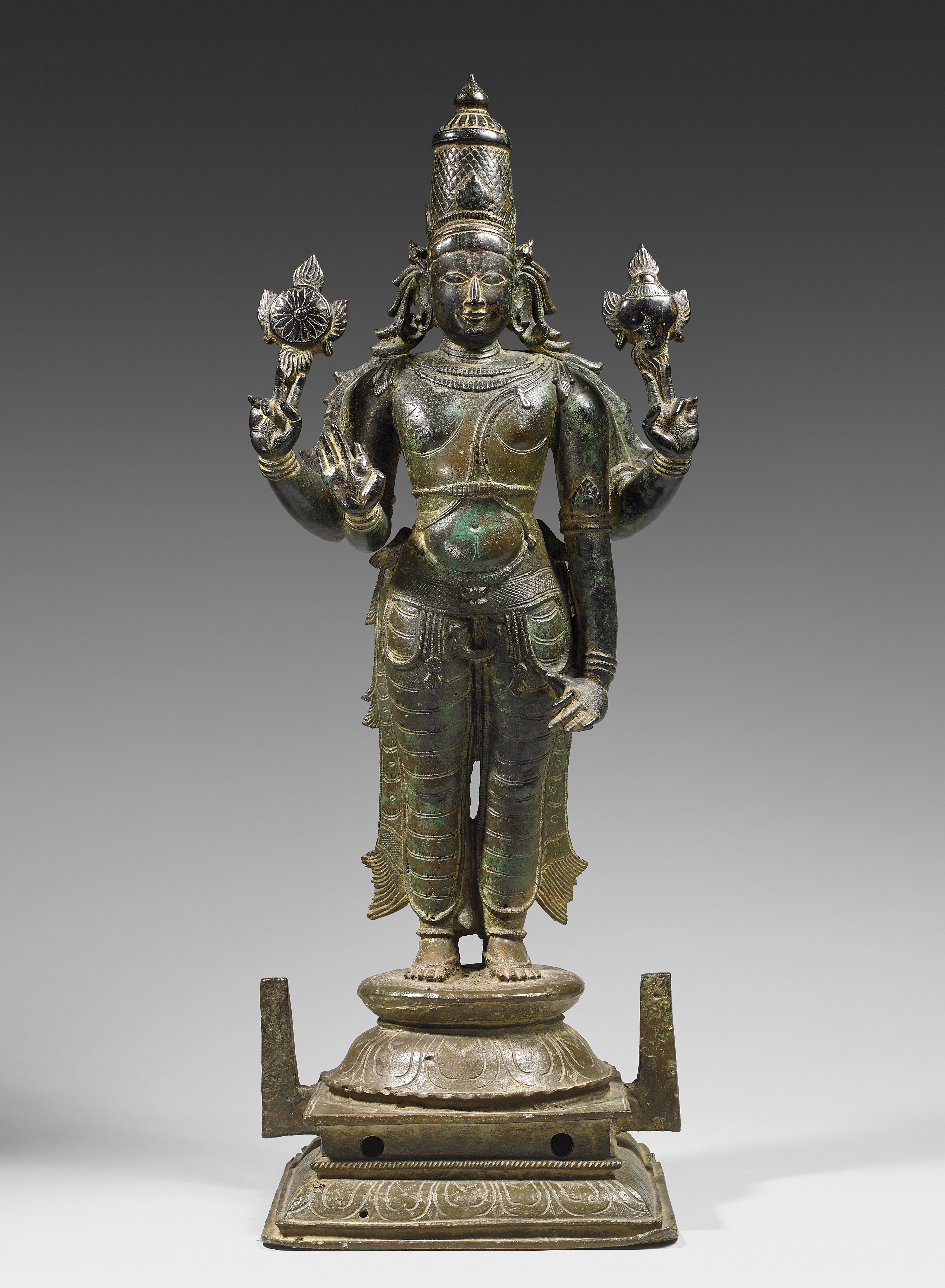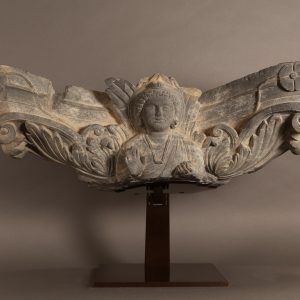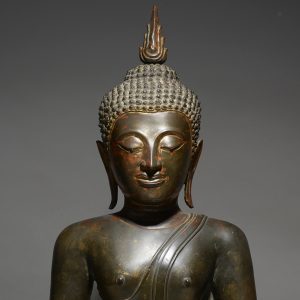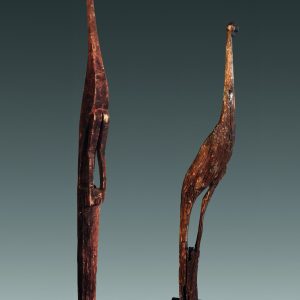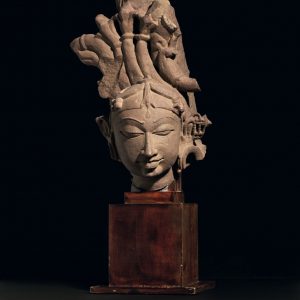Hindu god Viṣṇu
Bronze
Southern India
16th – 17th century, Vijayanagar Era
H. 66 cm or 26 in
Description
Here Viṣṇu is seen in a form which is widespread throughout southern India. Standing perfectly straight, he has four arms. With the first right hand, he is making the gesture of pacification (patakamudrā); the second holds the wheel (cakra), a particularly formidable throwing weapon. On the left, the first hand is stretched out to the side and the second is holding the conch (śaṅkha) which is called Pāṅcajanya. A royal tiara (kirīta) is on his head. Visible also is the Brahmanic cord and numerous jewels.
Southern India is famous for its bronze statuettes. These ex-votos, left in temples, were carried in processions during religious celebrations. The two large tenons on either side of the base were used to anchor it to a platform.
Such statuettes were part of triads, the god being accompanied by representations of his two main wives, Śrīdevī (Lakṣmī) on his right and Bhūmidevī on his left. These triads were particularly numerous at the end of the Cola Period (843-1173) and up to the Vijayanagar Era (1379-1565). We can mention a beautiful triad from the 11th century conserved in the Government Museum of Chennai (Régnier, 1996, p. 95) and another from the 13th century in the LACMA of Los Angeles (Pal, 1988, p. 286, n°153. Inv. M. 70.5.1-3). We should also mention a 15th century bronze of Viṣṇu in the V&A (In the image…p. 198, n° 356). Inv. IM 127-1927).
Provenance: Private collection, France, since the 1980s.
Art Loss Register Certificate, ref. S00106973
- In the Image of Man. Londres : Art Council of Great Britain, 1982
- Pal, Pratapaditya, Indian Sculpture, Vol.2. Los Angeles : Los Angeles County Museum of Art, 1988.
- Régnier, Rita, Des Dieux, le geste suspendu … L’Art du bronze dans l’Inde dravidienne. Paris : Editions Findakly, 1996.

